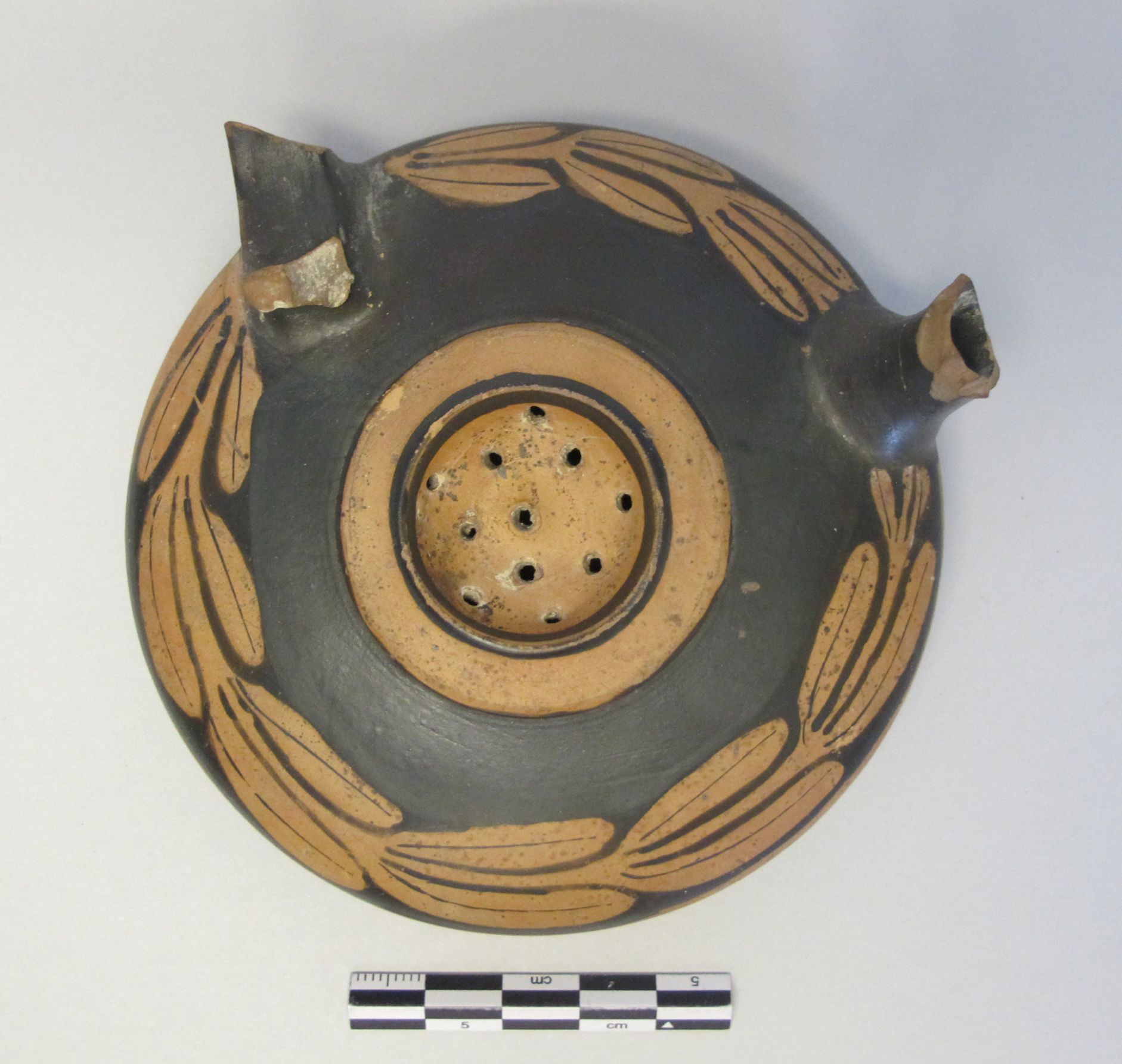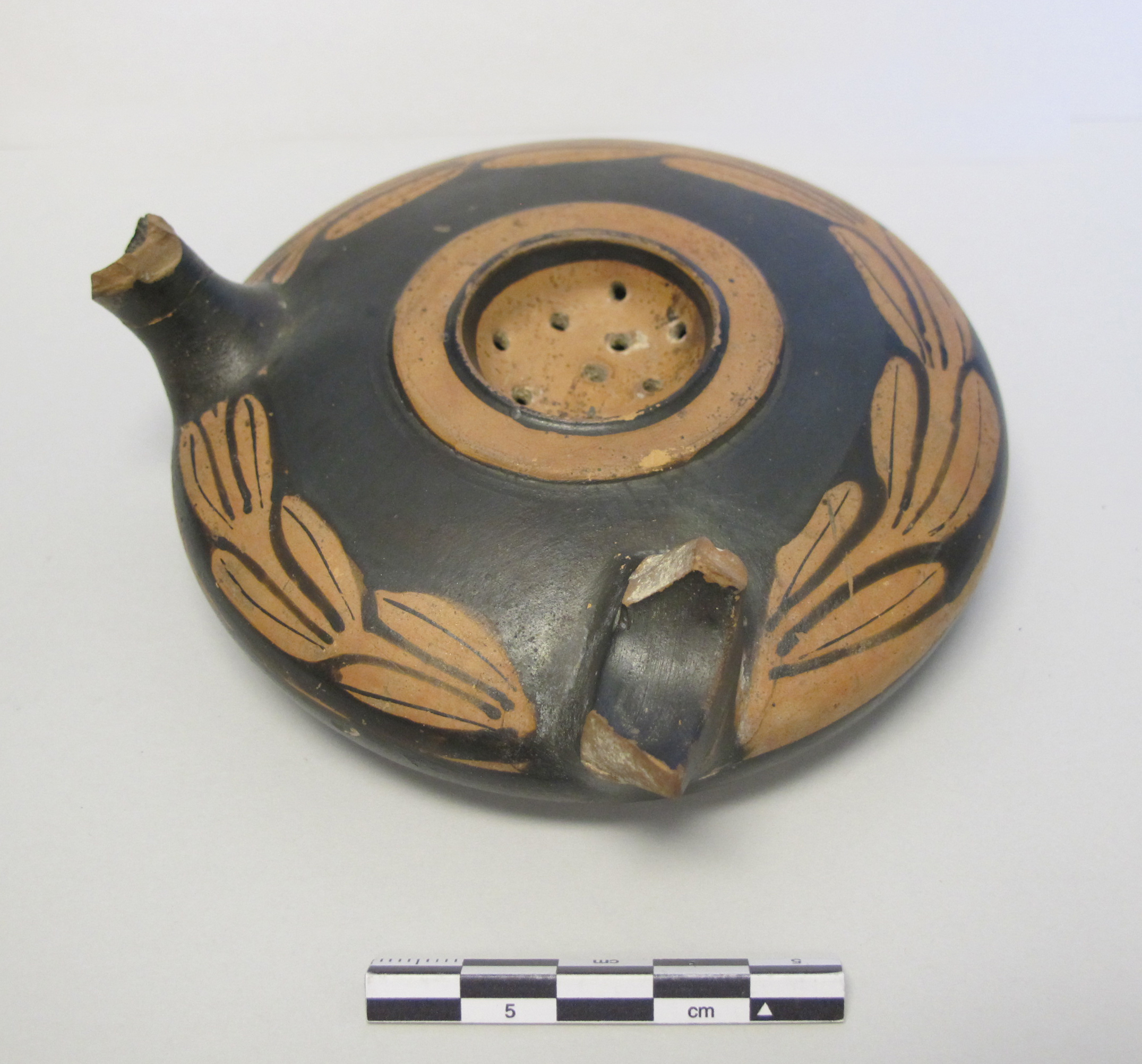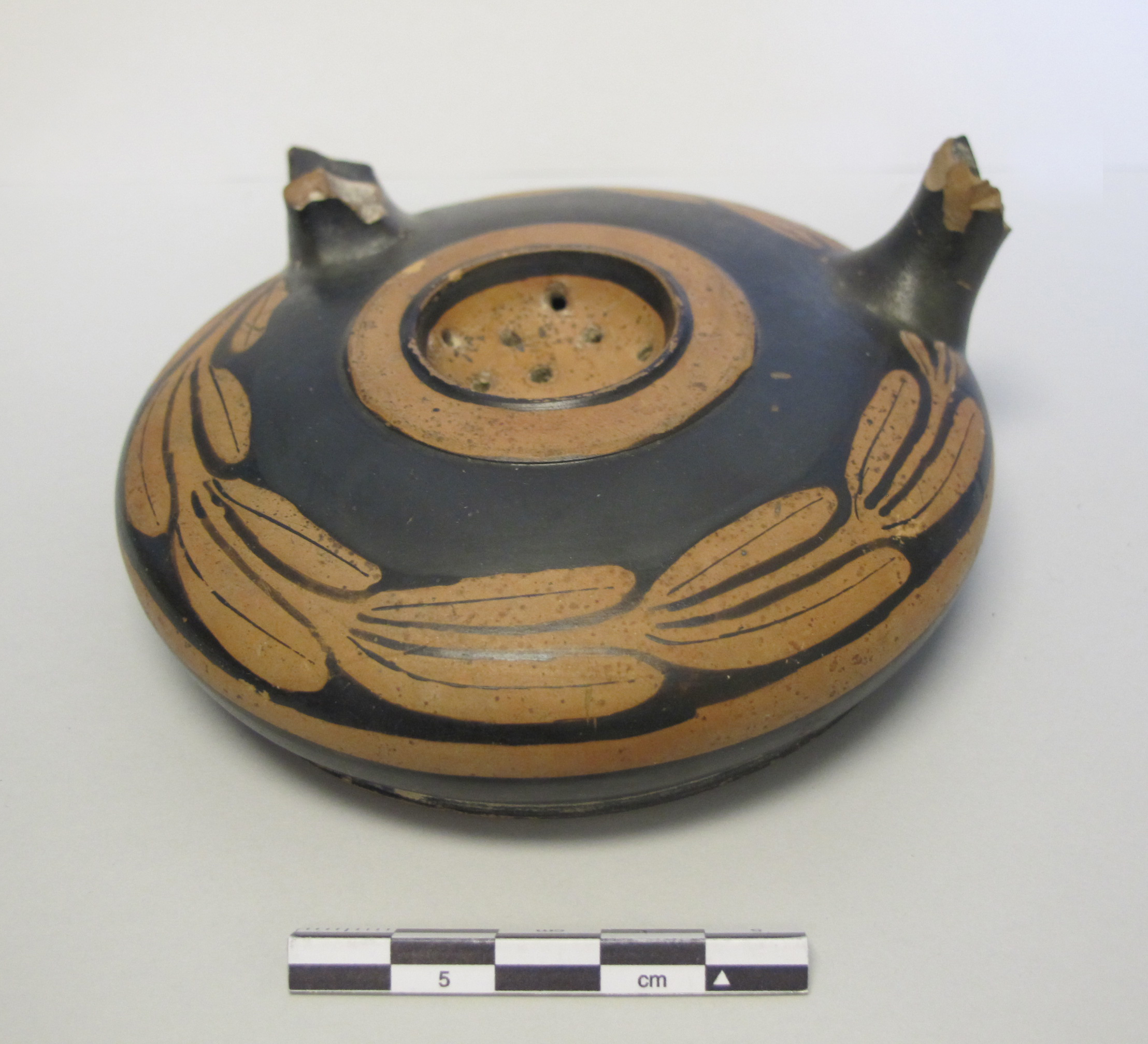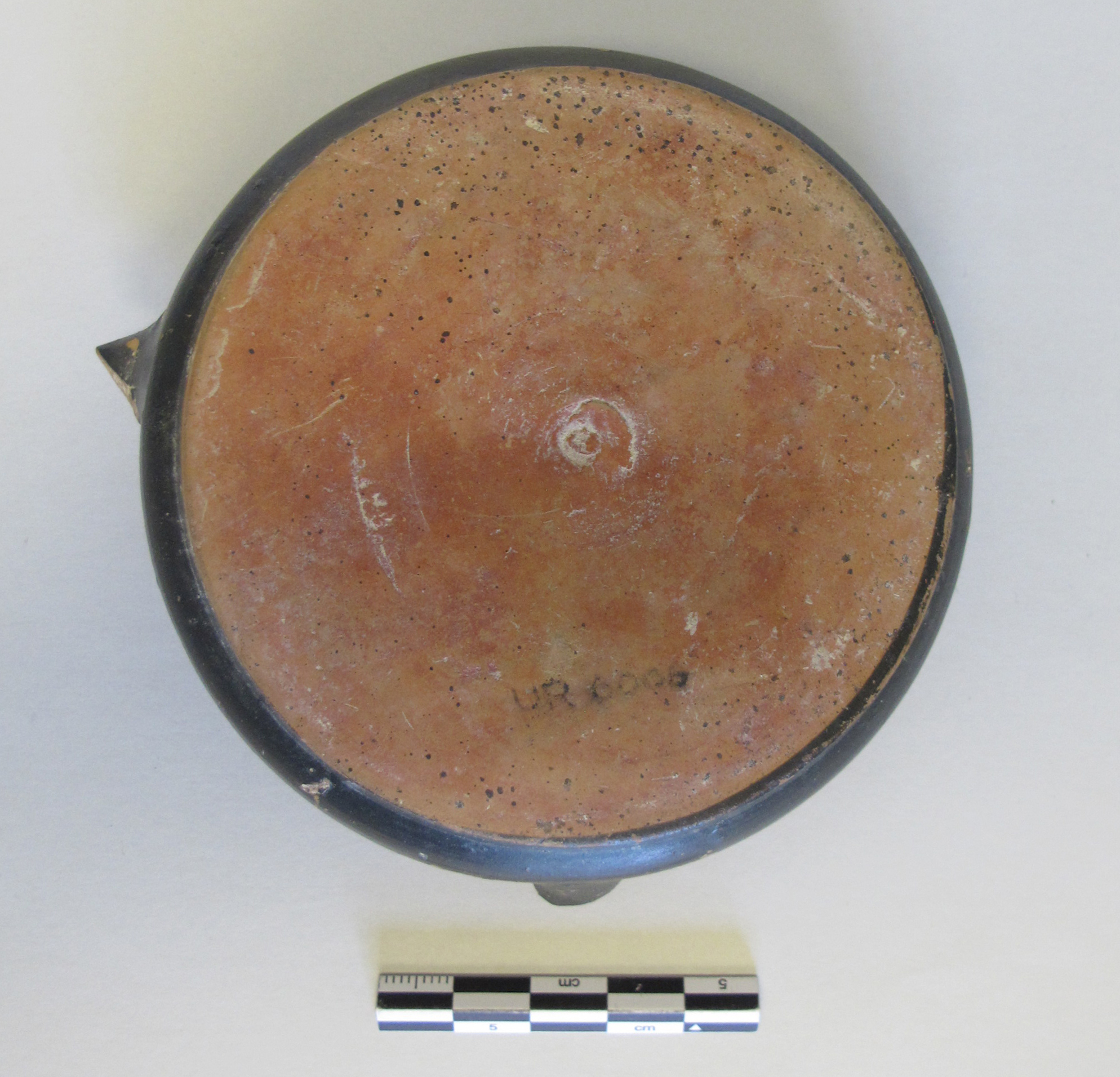For a 3D model made by the Virtual Curation Lab at Virginia Commonwealth University, see https://skfb.ly/oxtOZ.
AWG0000.01.04 (R6006)
Greek, Attic
Classical to Late Classical period (450-300 BCE)
Material: Ceramic
Technique: Red figure
Weight: 110g
Dimensions: max. preserved height 4 cm (3.1 cm to top of body); base diameter 9.1 cm, max. diam. 10.5 cm, top cavity diameter 2.9 cm
Condition: good; both handle and spout broken in antiquity, with a modern break of the spout now mended
Provenance: Unknown
Source/donor: Unknown
Date of acquisition: The inventory number beginning with R suggests that it was part of the Richmond College Museum collection. Other R-numbered items were displayed in the Biology Museum in Maryland Hall beginning in 1932.
Research by: Hunter Hagan, ’22
Detailed description of form/shape:
Rounded lentoid body with a flat base. Small, vertical ring handle on one side and a narrow pointed spout on the other. Shallow concave depression on the top of the body, perforated with 11 different holes 1-2 millimeters wide. A slight concave depression occurs off-center near the middle of the base, with faint concentric arcs incised around it.
Detailed description of decoration:
Tan-red clay with sloppy application of black slip in the red-figure technique. The rim around the depression is lined black, and then after a small reserve ring, a wide band of black slip appears to have been applied over another design, which is visible upon careful inspection. The covered-over design appears to have been a type of tongue pattern (narrow loops along a border, each containing a vertical line). Overlapped by the secondary black slip in multiple spots is a red-figure wreath of laurel or myrtle leaves encircling the body down to its widest point, interrupted twice by the spout and ring handle. An irregular reserve band encircles the widest part of the body, below the spout and handle. Black slip is applied along the lowest part of the body, extending over the edge of the base in some spots. The base was once covered in a matte red slip which has faded over time.
Comparanda:
For the general shape and the style of the laurel-wreath decoration, see examples in the Sackler Museum in Cambridge (“13458”), on auction at Christie’s in 2010 (“An Attic Red-Figured Guttus”), and in the British Museum (from the region of Cyrene in Libya, “Guttus”).
For the combination of wreath and tongue pattern on a vessel of similar shape, though without perforations, see an Attic red-figured askos from Torone in Macedonia, ca. 350 BCE (McPhee 2006: pl. 25.2, Torone 81.70).
Discussion:
Small flasks like this are known to modern scholars as gutti or askoi, though the ancient name for the shape is uncertain. The small spout must have been used for pouring small amounts of liquid. The perforations in the middle of the body could have been used for straining liquid as the container was filled or to release fragrance from the liquid contained. The term guttus derives from the Latin word for ‘drop’ and evidently was applied to small flasks from which liquid could be poured drop by drop. An askos was an animal-skin flask or a ceramic imitation of one. The body of this flask is less baggy than most pottery askoi, so it is more likely a guttus or “guttus type of askos” (Sparkes and Talcott 160).
The function of this shape is debated. One posited use, based on the small size of the spout, is a baby-feeder, but the possibility of leakage from the perforations on the top makes this usage unlikely. A more likely hypothesis is that this type of vessel would have been used to strain and filter oils that contained aromatic herbs or other additives, before refilling oil lamps or rubbing the oil on the body. Straining wine is another possibility, but the small amount that could be contained at any one time is more suggestive of filtering perfumed oil, which would have been used in smaller amounts than wine.
Bibliography:
“13458, Athenian, Cambridge (MA), Harvard University, Arthur M. Sackler Museum, 1935.35.50.” Beazley Archive Pottery Database. Accessed September 29, 2021. http://www.beazley.ox.ac.uk/record/137BA915-2BA9-4BCE-8AD1-592E5BBF7B57
“An Attic Red-Figured Guttus.” Christie's, December 8, 2010. https://www.christies.com/lot/lot-an-attic-red-figured-guttus-circa-400-bc-5385419/?from=salesummary&intObjectID=5385419&lid=1.
“Guttus.” The British Museum. Accessed September 29, 2021. https://www.britishmuseum.org/collection/object/G_1868-0705-143.
Mayo, Margaret Ellen. The Art of South Italy: Vases from Magna Graecia: An Exhibition. Richmond: Virginia Museum of Fine Arts, 1982.
McPhee, Ian. “The Red-Figured Pottery From Torone 1981–1984: A Conspectus.” Mediterranean Archaeology 19/20 (2006): 125–32. http://www.jstor.org/stable/24668192.
Sparkes, Brian A. and Lucy Talcott. Black and Plain Pottery of the 6th, 5th and 4th Centuries B.C. The Athenian Agora: Results of Excavations Conducted by the American School of Classical Studies at Athens, vol. XII. Princeton: American School of Classical Studies at Athens, 1970. https://doi.org/10.2307/3601975.




